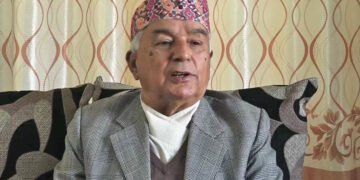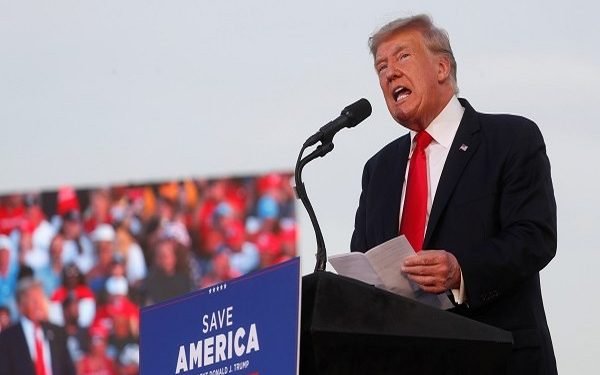Kathmandu: In a decision that has reverberated across Nepal and beyond, U.S. President Donald Trump has terminated all financial aid to the country, citing concerns over mismanagement. Shortly after beginning his second term on January 20, 2025, Trump signed an executive order halting $39 million in funding previously allocated for fiscal federalism and biodiversity conservation. This dramatic shift in U.S. foreign policy is expected to have far-reaching consequences for Nepal’s economic progress, social development, and international relations.
During a press conference at his Mar-a-Lago residence, Trump emphasized the need to eliminate what he referred to as “fraudulent spending.” This move follows previous actions by the U.S. Department of Government Efficiency (DGE), led by Elon Musk, which had already scrapped six USAID-funded projects in Nepal. The closure of USAID, a long-standing pillar of American humanitarian and development efforts, has resulted in the indefinite suspension of its staff and the inaccessibility of its official website. This decision aligns with the broader foreign aid cuts implemented by the Trump administration, which have also affected countries such as India, the Maldives, Liberia, Mali, and South Africa. Many Nepali organizations operating in the social, environmental, and media sectors are already experiencing disruptions, with employees working remotely due to funding uncertainties.
For decades, the U.S. has played a significant role in Nepal’s development. Since 2000, USAID has provided Rs196 billion ($1.5 billion) in aid, supporting programs in women’s empowerment, health, education, and humanitarian relief. In 2024 alone, USAID invested $151.1 million in Nepal, with a considerable portion directed toward gender equality initiatives. The abrupt withdrawal of financial assistance is expected to create challenges across various sectors. Infrastructure development, small business support, and job creation efforts may experience setbacks. The reduction in foreign exchange inflows could further strain Nepal’s economy, increasing reliance on remittances and alternative donors. Additionally, U.S.-funded healthcare programs, including maternal and child health services, disease prevention, and medical supply distribution, now face an uncertain future. Educational initiatives, including scholarships and teacher training programs, could also suffer, impacting thousands of students nationwide.
The U.S. has historically been a major contributor to Nepal’s disaster preparedness and response efforts, particularly after the 2015 earthquake. Without American aid, Nepal’s ability to respond effectively to future natural disasters, such as earthquakes, floods, and landslides, may be compromised. The suspension of funding will also impact governance and human rights programs, which rely on U.S. support to promote democratic institutions, political stability, and the rule of law. Additionally, Nepal has received U.S. assistance in security training, peacekeeping operations, and disaster response preparedness, all of which could now face significant setbacks. The suspension of financial support from the Millennium Challenge Corporation (MCC), a key U.S.-Nepal partnership, further adds to the uncertainty regarding future bilateral relations.
With the U.S. pulling back its aid, Nepal is likely to turn to alternative sources of funding, particularly China and India. Beijing has already invested heavily in Nepal through its Belt and Road Initiative (BRI), and the latest developments may further strengthen Chinese economic and political influence. Likewise, India, Nepal’s closest neighbor, may seize this opportunity to expand its engagement in Kathmandu. As a result, Nepal’s geopolitical alignment may shift in response to the changing dynamics of international aid and investment.
While the immediate repercussions of this decision will be challenging, Nepal must view this moment as an opportunity to reassess its reliance on foreign aid. Enhancing domestic revenue generation, strengthening governance, and diversifying global partnerships will be crucial in navigating this transition. The government should prioritize self-sufficient economic policies while leveraging Nepal’s strategic location to attract investment from other international players. Trump’s decision to cut aid is not merely a budgetary measure; it is a signal for Nepal to become more economically resilient. While the loss of U.S. funding presents short-term difficulties, it also allows Nepal to build a stronger, more independent future. As the nation adapts to this new reality, a critical question remains: Will Nepal successfully transition toward economic self-reliance, or will this shift push it further into the orbit of emerging global powers ?





















